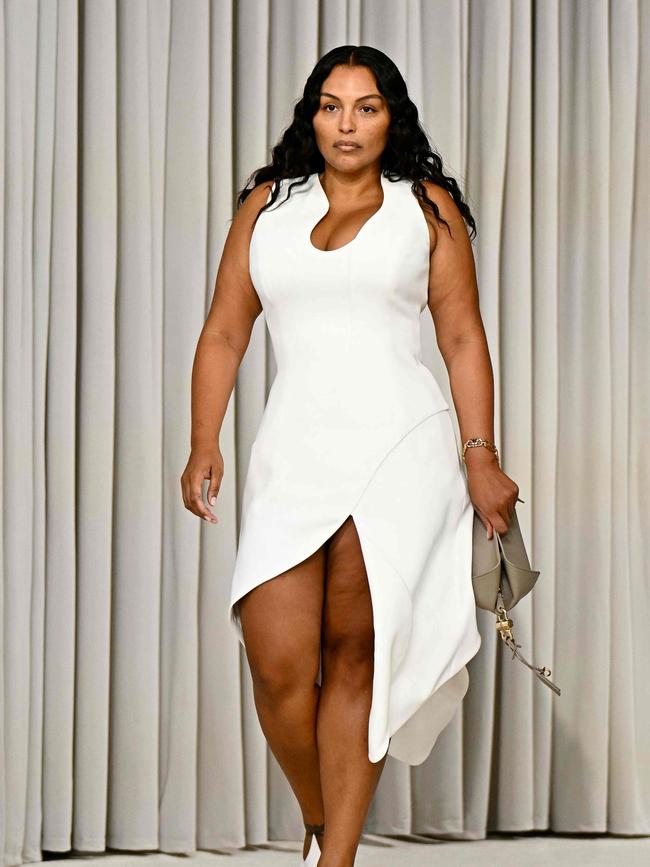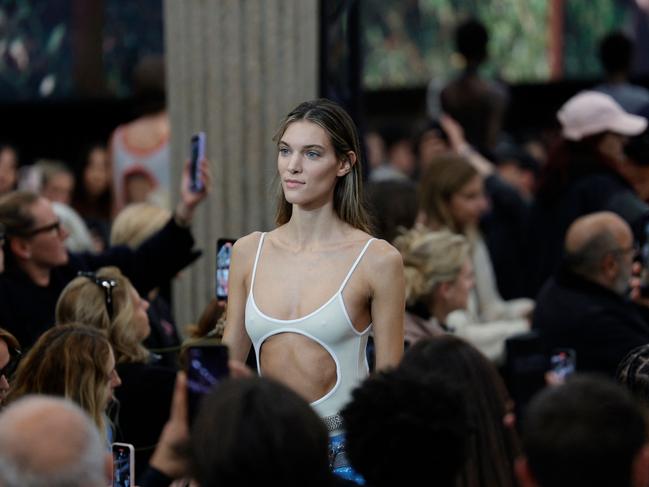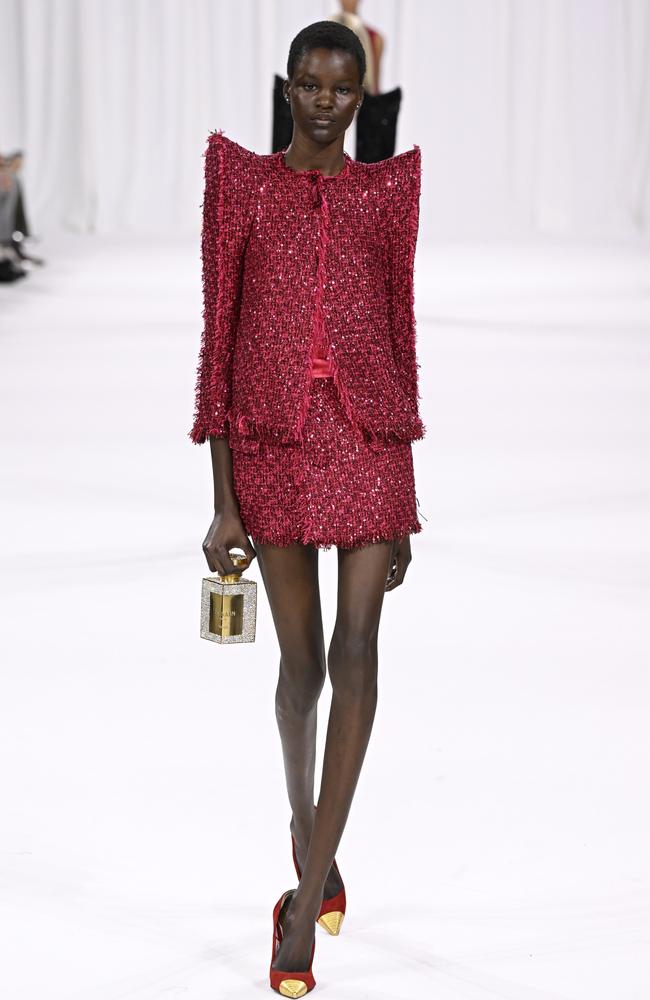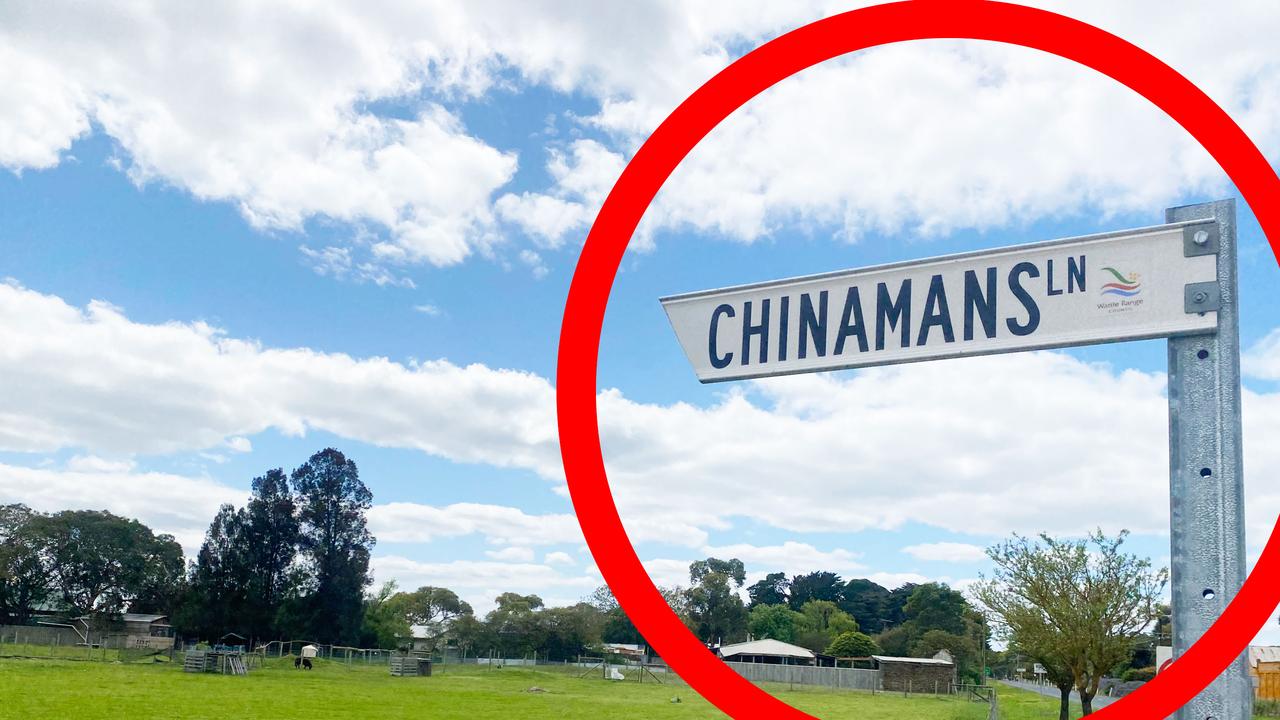‘Worst in a long time’: Lack of diversity on SS25 womenswear runways
It is a picture that should bring joy. But instead it is part of a massive problem with the fashion industry that is leaving many furious.

Lifestyle
Don't miss out on the headlines from Lifestyle. Followed categories will be added to My News.
Diversity in the fashion industry has taken a turn for the worse, new analysis has found, amid the rising use of Ozempic and “glamorisation” of thinness.
Vogue Business’ twice-yearly size inclusivity report found there had been “very limited progress” in diversity across the 208 spring/summer 2025 (SS25) shows and presentations.
Of the 8763 looks presented at the “big four” fashion weeks – New York, London, Milan and Paris – 0.8 per cent were plus-size (above a US size 14 or Australian 18) and 4.3 per cent were mid-size (US 6-12 or Australian 10-16), driven in part by the use of “muscular” male models at co-ed shows.
A staggering 94.9 per cent of looks presented, then, were on straight-size (US 0-4 or Australian 4-8) models.
“For me, it was the worst season in a long time,” Dazed fashion features director, Emma Davidson, told Vogue.
“It has felt like brands were turning their back on inclusive casting for a while, but this season, I sat in my seat a few times at shows where bigger models had previously been present, and it was so disheartening to see no representation – this season feels like the nail in the coffin.”


Warnings the fashion industry is on the verge of a great shrinking have gained momentum in recent years, coinciding with the use of Ozempic (and its counterparts, Mounjaro and WeGovy). The GLP-1 injectable, initially designed for diabetes, has gained popularity for its off-label – and, in Australia, unauthorised – application as a weight-loss drug, becoming more accessible and affordable overseas.
“As the population as a whole gets thinner – particularly in the celebrity/fashion world – we’re seeing straight-size models sizing down to what many deem unhealthy proportions, reigniting the criticisms over heroin chic and size zero in the ’90s and noughties,” Vogue noted.

Casting director Emma Matell, who worked on shows across London, Milan and Paris this season, said she was “shocked” by some of the models she’d seen.
“The last couple of seasons, I’ve emailed agents when I’ve seen models come in because I’ve been like, ‘Why is this girl at a casting?’” she said.
“(Increasingly) girls come in, and you can tell they’re unwell. They’re exhausted, shivering, or their lips are blue. I’ve emailed agents saying, ‘This is not OK’.”
As sizes on the runway dwindle, Ms Matell added, already straight-size models are feeling they need to lose weight in order to succeed.
Over on TikTok, one video featured a model from SS25 captioned “the skinniest model ever”. The “aspirational” clip garnered some 160,000 views and 26,300 likes, while those in the comments declared that “high fashion is back”.
Head of TikTok at Highsnobiety, Tora Northman, said she’d struggled to enjoy the actual output of designers “because of the lack of body diversity on the runway”.
“Certain models definitely felt too thin, and it was brought up multiple times in conversations with editors and the fashion crowd attending the shows,” she said.
“It is clear that they were noticeably thinner bodies on the runway, and that it caused a reaction.
“It’s sad to see an industry that made a lot of progress over the past few years revert back to the toxic, unhealthy ways of the past, but it feels like those in charge still see being thin as being beautiful and being more ‘fashion’.”

The founder and executive director of US-based Model Alliance, Sara Ziff, said the organisation “continues to hear from models about the pressures they face to go to dangerous extremes to alter their appearances at the expense of their health and wellbeing”.
“Models of all shapes and sizes still lack meaningful protections, leaving them vulnerable to abuse,” she said.
“The modelling industry’s ultra-thin ideal is a labour rights issue. Models on the runway appear to be glamorous, but often they are young women and girls who lack basic rights and protections as workers.”
Industry insiders told Vogue it’s time for brands to prioritise size inclusivity on the runway, as well as work to cast healthy models.
“Models can walk into a room and be rejected 10 to 15 times in one day,” Ms Matell said.
“If that happens to you, you’re going to want to change yourself. Next season you’re going to want it to go better. And looking at the runway right now, you might think that means losing weight.”
More Coverage
Originally published as ‘Worst in a long time’: Lack of diversity on SS25 womenswear runways





